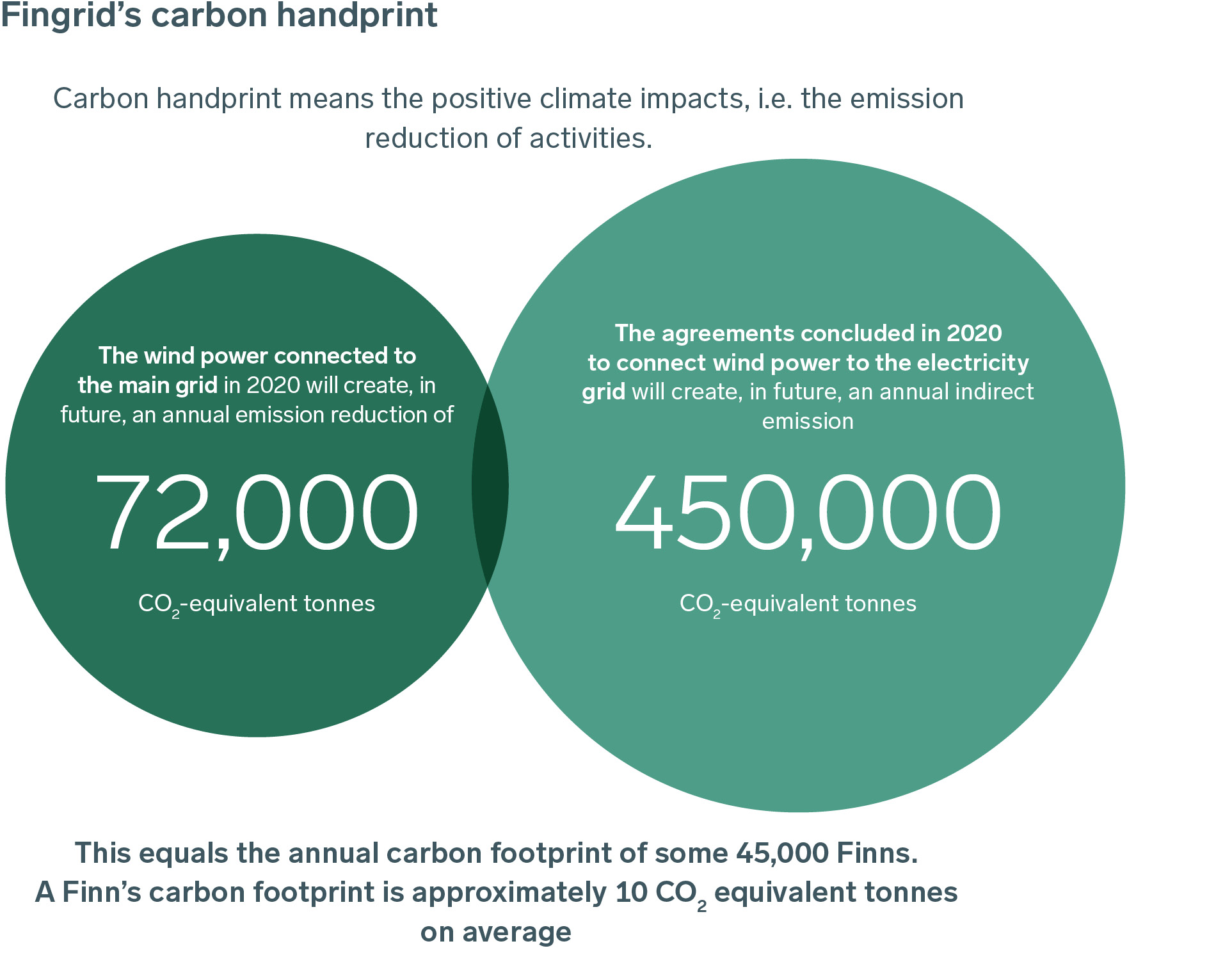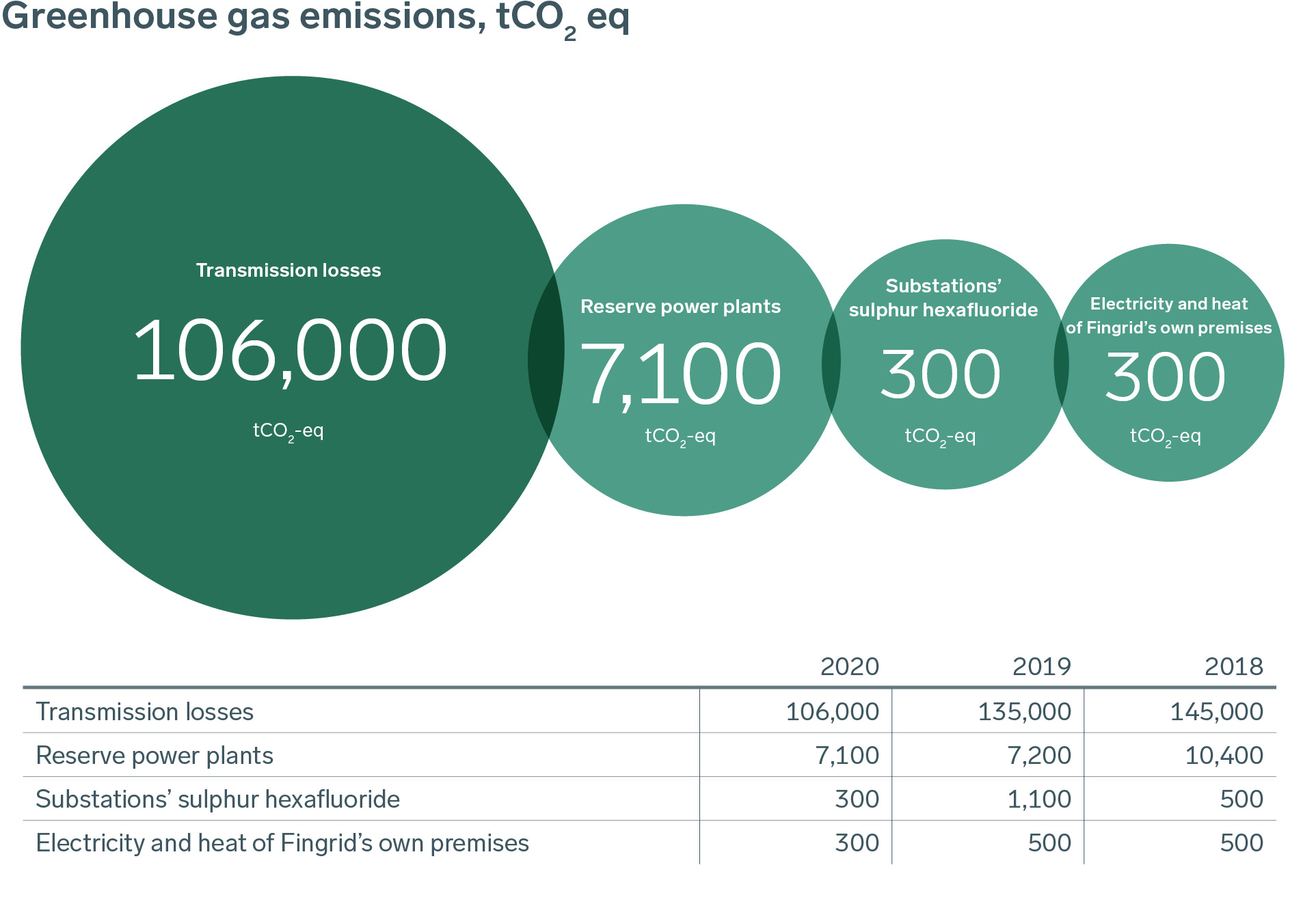Fingrid’s environmental impacts
Fingrid contributes to combatting climate change by building and maintaining the main grid, which enables clean electricity to be generated and consumed. The main electricity transmission grid for which Fingrid is responsible must be sufficient to enable Finland to reach its climate targets. We must succeed in connecting clean electricity to the main grid, and we also need to transmit it securely from producers to consumers.
In 2020, a total of 296 megawatts of wind power was connected to Fingrid’s main grid. In the coming years, this capacity will indirectly help to avoid an equivalent of 72,000 tonnes of CO2 emissions. In the same year, Fingrid made contracts to connect a total of approximately 1,800 megawatts of wind power generation to the grid. When this capacity comes online, it will have a substantial positive effect on the climate, as approximately 450 000 tonnes of carbon dioxide equivalent emissions will be indirectly avoided.

When we make investments in the main grid to enable the transition to a clean electricity system, we also cause a certain amount of greenhouse gas emissions. We report our carbon footprint and handprint in our annual report.
Fingrid’s carbon dioxide emissions in 2020 totalled approximately 118,000 tonnes of carbon dioxide equivalent. Our share of Finland’s greenhouse gas emissions was approximately 0.3%.
The majority of our emissions (approximately 90%) are the indirect result of electricity generated to compensate for the power losses occurring in electricity transmission. We minimise losses by making energy-efficient investments in the main grid, purchasing equipment and developing the power system to enable renewable electricity generation to be connected to the main grid. As the power system production changes and the main grid investments required by the changes are made, the carbon footprint of transmission losses will decrease.
In addition, greenhouse gas emissions are caused when reserve power plants are started to offset severe disturbances in the power system and if sulphur hexafluoride (SF6), a powerful greenhouse gas contained in substation equipment, is released into the atmosphere. The SF6 gas emissions were approximately 14 kilograms. At the end of 2020, substations contained a total of approximately 50 tonnes of SF6 gas. The annual leakage rate has been very low over the long term, averaging less than 0.2 per cent, which is one of the best results in the international ITOMS comparison.
Other indirect emissions are caused by business travel and procurement.

Read more about Fingrid’s role in combating climate change on the following page: https://www.fingrid.fi/globalassets/kuvat/piirrokset/fi/climate-fact-sheet-2020-en.pdf

